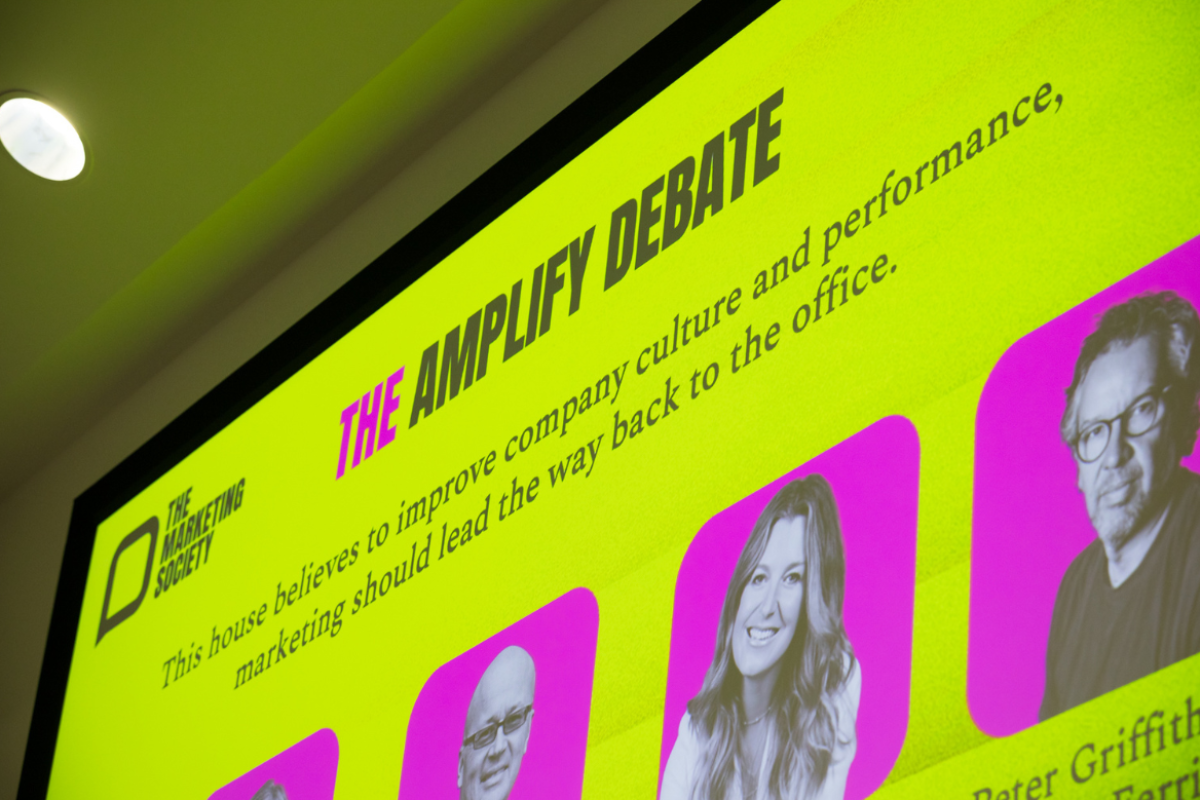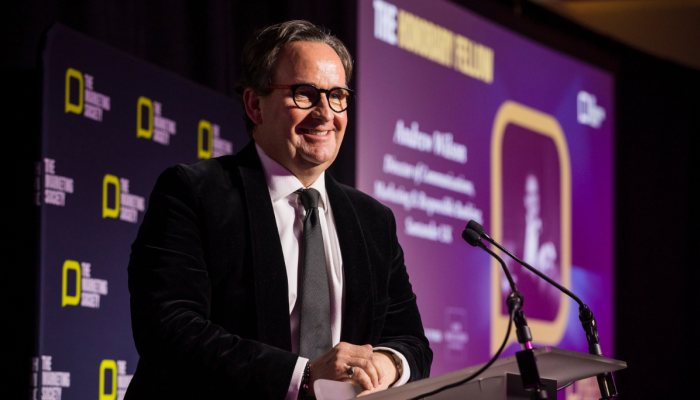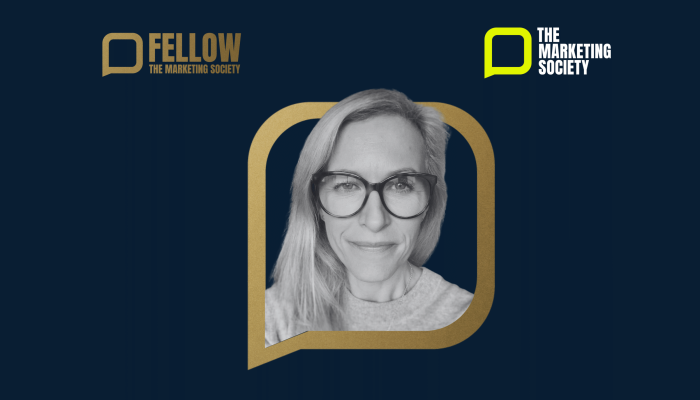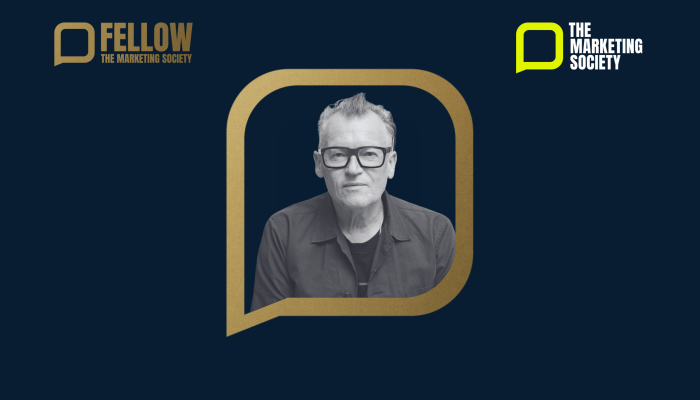Amplify Delivers on Content – Again
First up, this year’s Amplify festival was chock full of content. In fact, The Marketing Society continues to impress at the calibre of its content at these events. There were so many takeaways, but here are just a handful of headlines I managed to scribble down as the speakers delivered hit after hit:
- Advertising started in Paris in the Moulin Rouge – go figure
- You need at least 2.5 seconds to create mental availability for brand awareness… good luck, TikTok
- Only art can make you feel and only feeling can make you act
- Office workers on average creatively collaborate 52% more than home workers
- We spend on average 90,000 ours of lives at work – make them count
- 1/2 employees are in a toxic relationship with the place they work and would actively sabotage it if they could get away with it.
- 1 in 5 18-24 year olds have on average 1 or less “real” friends I.e. those not online
- 85% of attendees at Cannes this year didn’t have official tickets… all hail the big tech beach clubs
- You have a 3% chance of winning a Cannes Lion if you enter – make sure your entry is a good one
- The next generation of Marketing Society members are FRIGHTENINGLY good at pitching creative work. We’d better watch out!
Work, Culture and Connection – What the Numbers Say
What was most interesting (and exciting) to me, though, is the ever-increasing gravitational pull between brand and marketing, and employer brand and employee experience. I don’t think we’ve by any means nailed it just yet, but I lost count of the times the word ‘culture’ was mentioned beyond it’s more traditional meaning of ‘engaging with the yoof’. And, shock horror… we even had HR and adjacent industry pros in the room. Something that was largely unheard of at a brand and marketing event just a couple of years ago.
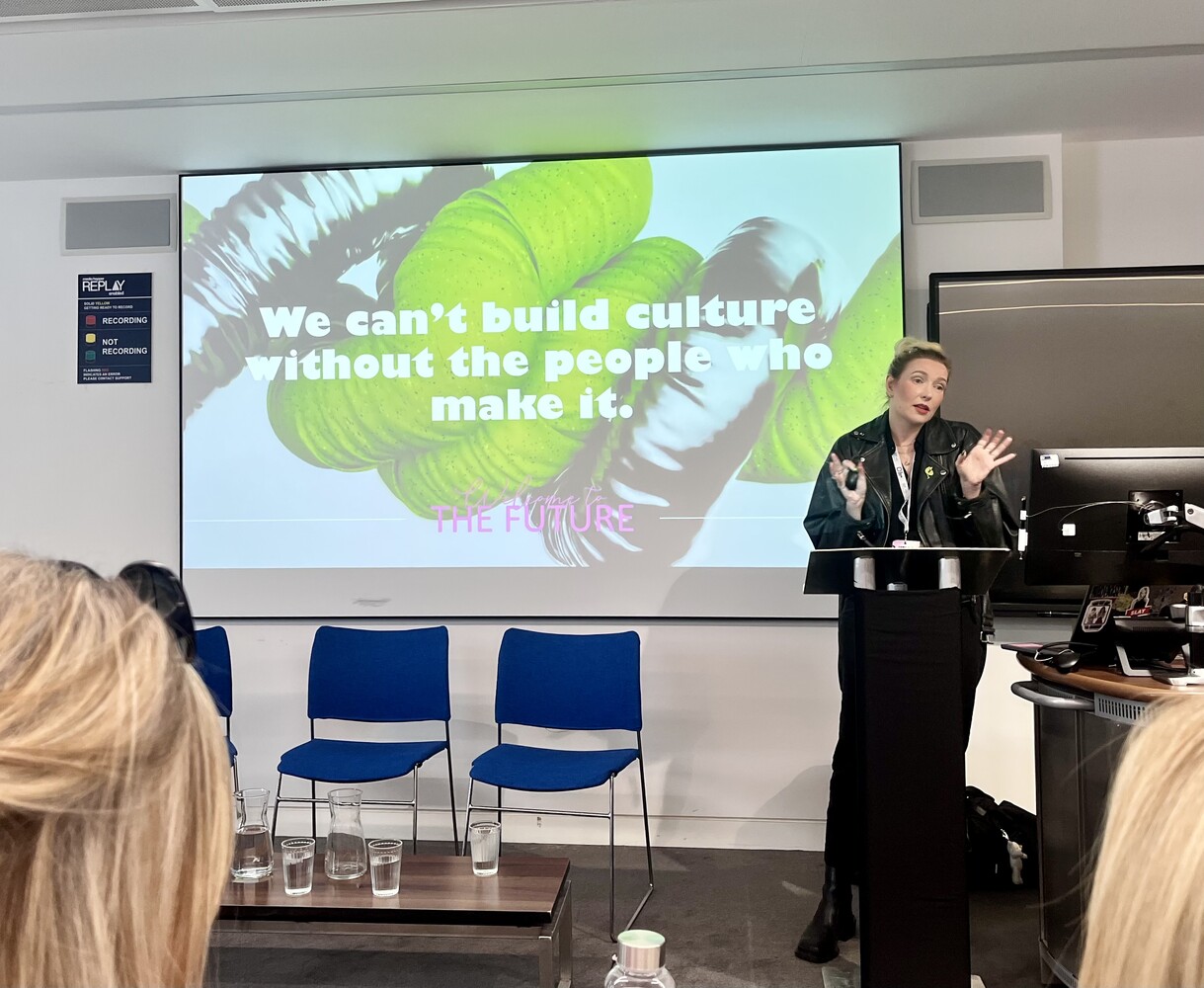
Franziska Gregor, MD at Serviceplan on all things creative culture
The agenda covered discussions on everything from employer brand to building workplace culture, but the standout session for me was The Amplify Debate on whether “marketing should lead the way back to the office to improve company culture and performance”.
Hybrid Working – A Personal Perspective
This one’s personal for me… without hybrid working, I wouldn’t have a career. I’ve worked in agencies across both internal comms and employee engagement, and brand comms and marketing for 20 years (ewwwwww, not nice to say out loud) and I’ve only ever lived in the same city I’ve worked in for a handful of those years. I’ve crossed east to west and even across borders to “get to work”.
Full time office attendance has never been essential, and it’s never stopped me or the agencies I’ve worked at both building brilliant cultures and attracting top talent to drive commercial performance. In fact, using culture to drive brand and business performance is something MadeBrave has not only helped clients to do for over a decade, it's shaped the very fabric of our own business and how we work, perfectly marrying external brand and internal brand culture. Go figure I ended up here eventually.
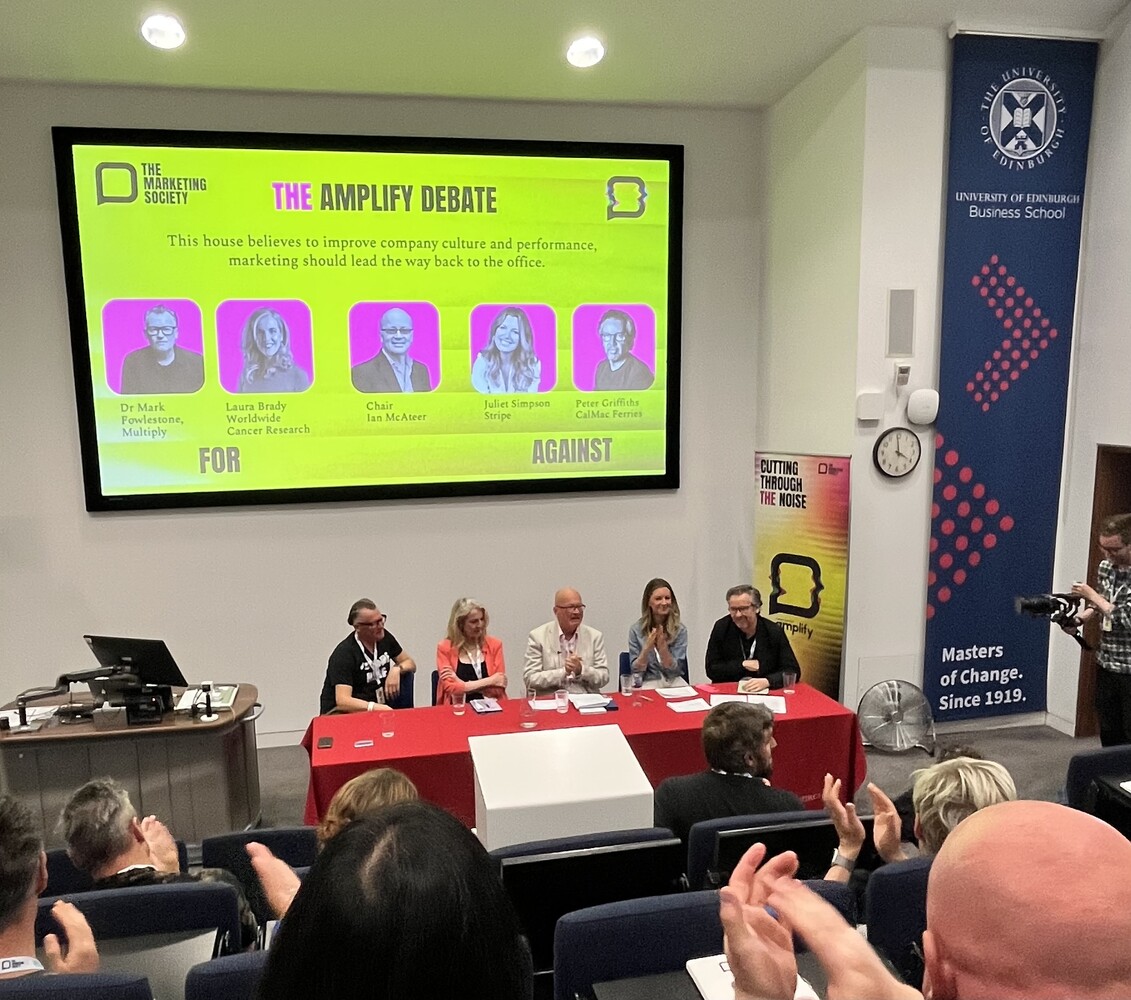
The hotly contested Amplify Debate - should marketing lead the way back to the office to improve company culture and performance?
The Amplify Debate: Back to the Office or Not?
Back to The Amplify Debate. On the side of coming back to the office to improve culture and performance was the rather wonderful Laura Brady, Director of Marketing and fundraising at Worldwide Cancer Research. Now her argument was nuanced, and she didn’t actually express she believed office work should be full time, but one of the many nuggets of brilliance she motioned was:
“Marketing is the real people discipline. The people who inspire belief. That build cultures, creativity and collaboration. We know best when it comes to meeting needs of people – it’s literally our job.”
Amen.
So, surely the big debate should be “why on earth aren’t marketing and HR working closer together!?”. Why do internal comms and external comms still operate in two worlds apart in most organisations.
It shouldn't be rocket science, but far too few brands overlook the power of employee engagement to build brand ambassadorship from within. It's refreshing and encouraging to see dedicated sessions at events traditionally focused on brand and marketing covering these aspects of brand building and business success, but we do need to move past this “full time or not full-time office work” conversation.
Moving Beyond the “Full-Time Office” Question
All organisations will find the right mix for them, their industries, their customers and their people, but largely, this will involve a degree of flexibility and there will not be one size fits all either within or across businesses and industries.
What it comes down to is flexibility, communication and the right infrastructure to help make hybrid working, work. And if we’re supposed to be communications experts, surely it’s in our gift to get to a solution.
To bring in Orlando Wood’s brilliant opening Ogilvy lecture on the art and science of advertising (literal magic in that opening section!), our brain works in two halves. The right brain for showmanship, and the left brain for salesmanship. The entertained irrational brain, and the informed logical brain. Inspiration vs. information. Inspire and inform. It’s what we do every day, so why can’t we inspire talent with the right amount of trust and flexibility, and inform them of the levels of communication expected to make that flexibility work.
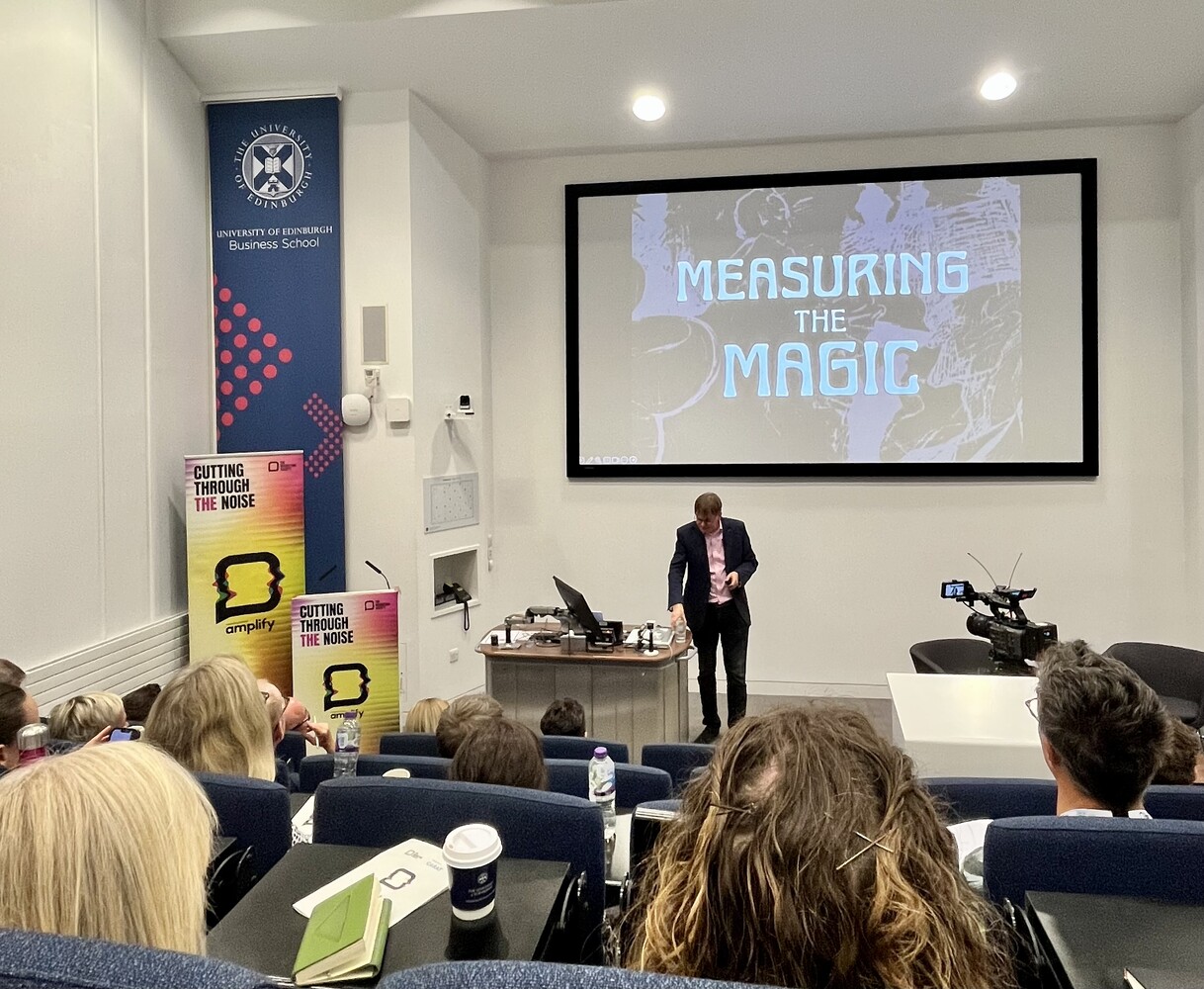
The magical Orlando Wood, CIO, System One
So, Should Marketing Lead on Culture?
So, to come back to the actual big debate… should marketing lead on culture to drive business performance? Absolutely yes, just not quote in the way it was discussed yesterday.
I’m really looking forward to the next big debate and the great work to bring our internal and external brands ever-closer together continue. Long live the Organisational Brand (stolen from John Botia with pride, below).
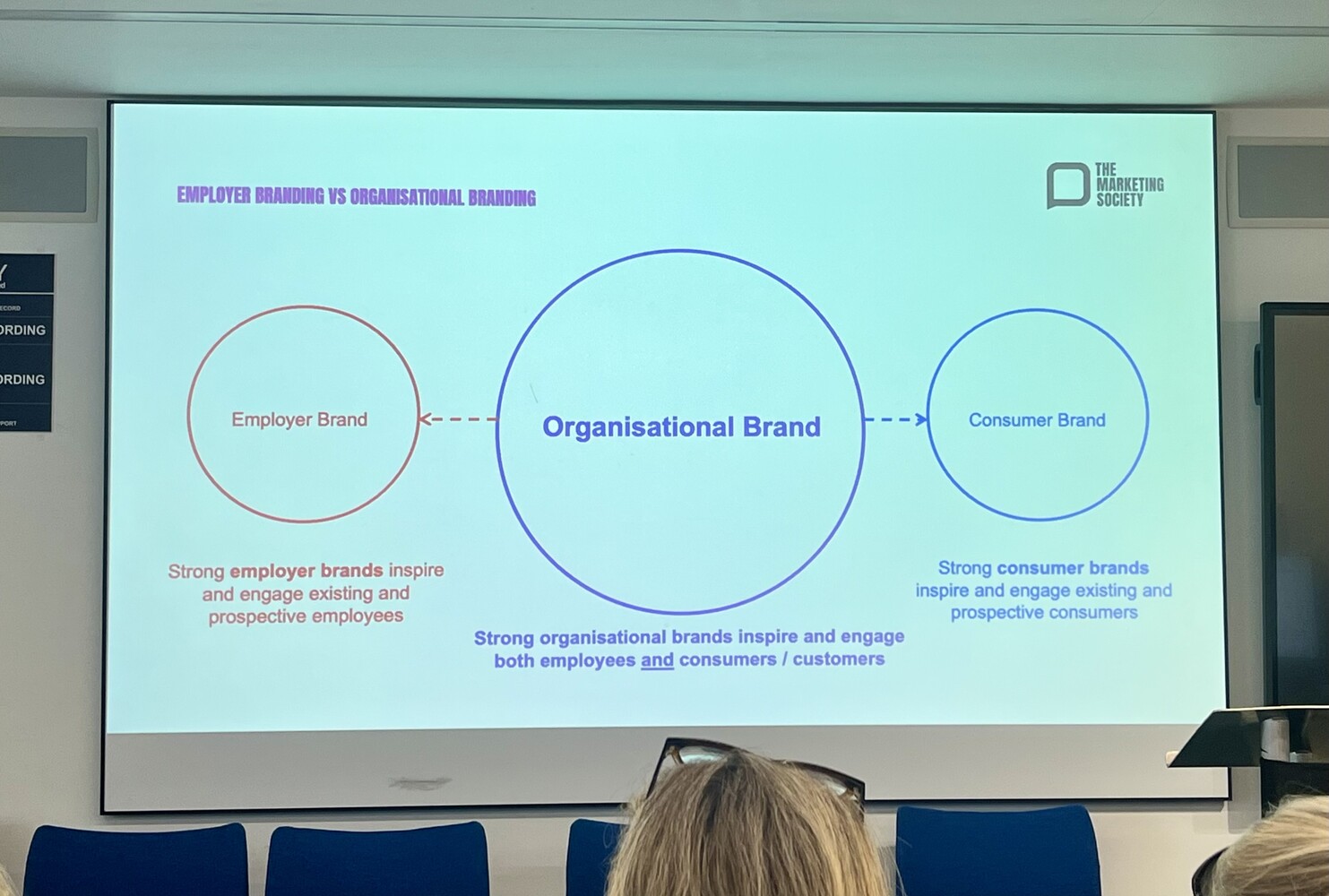
The future is Organisational Brand thinking - John Botia, Calo International
